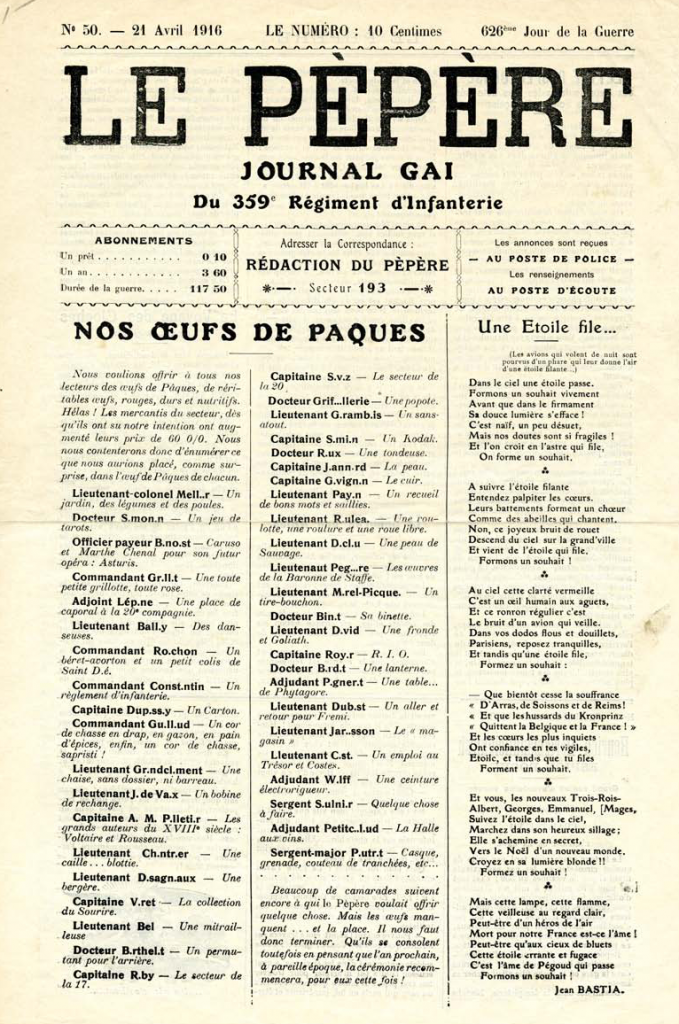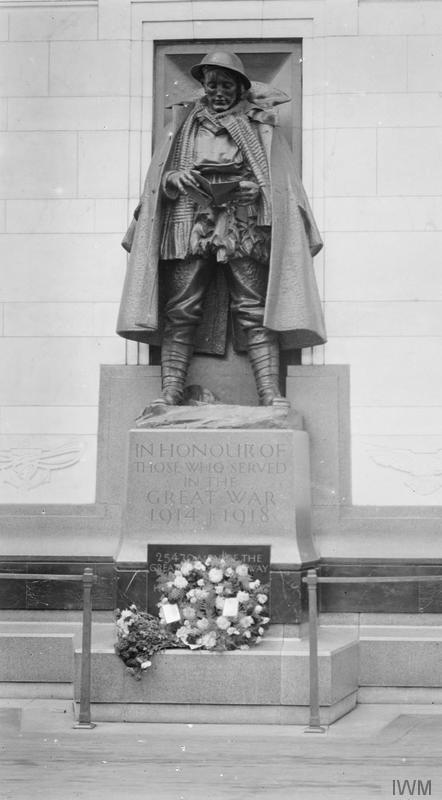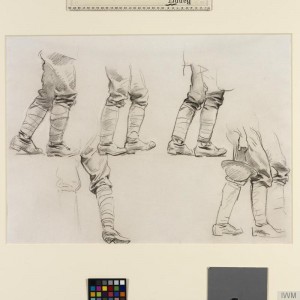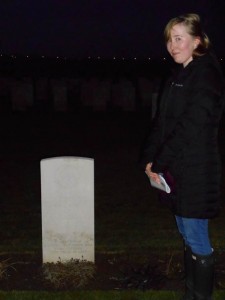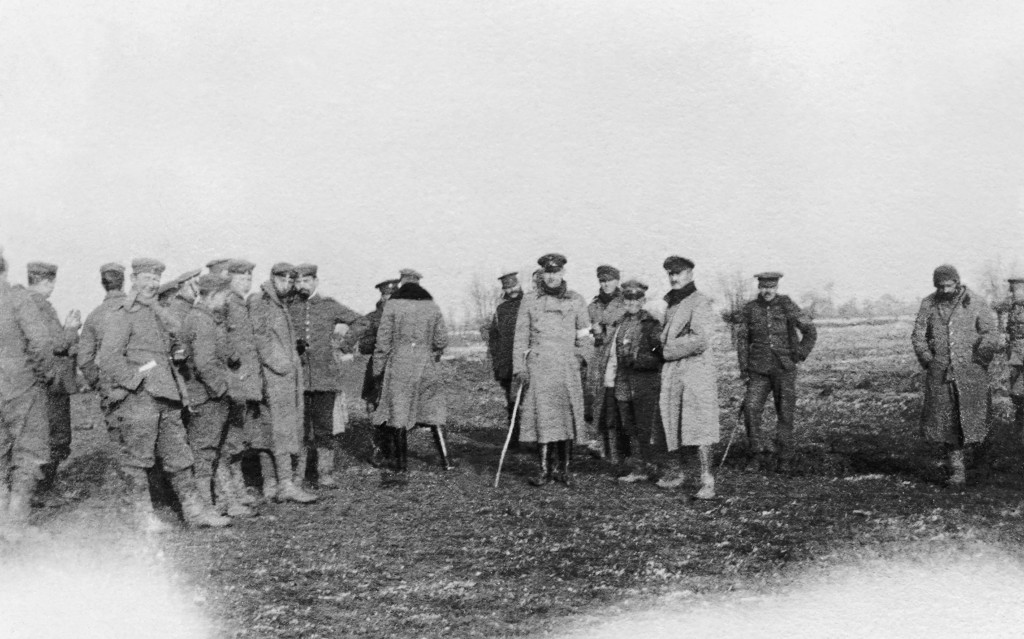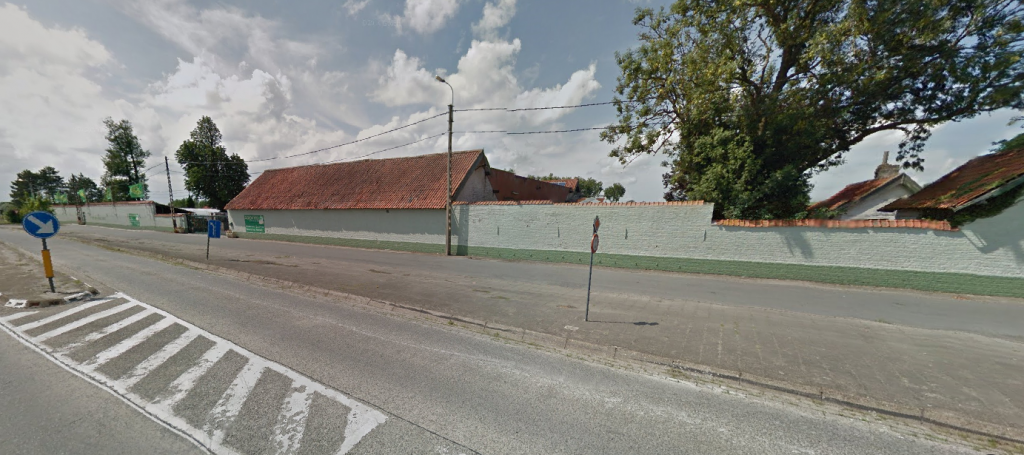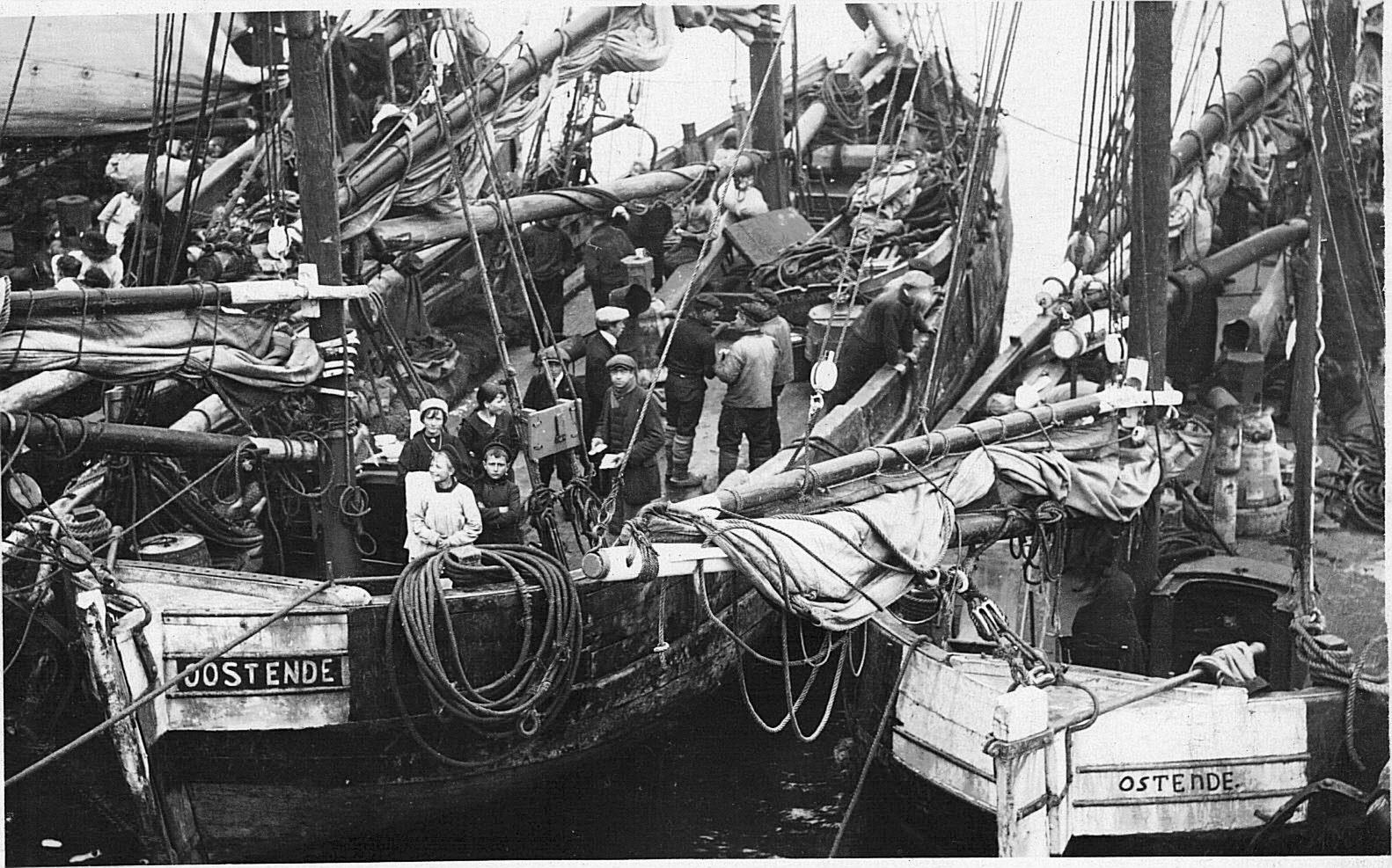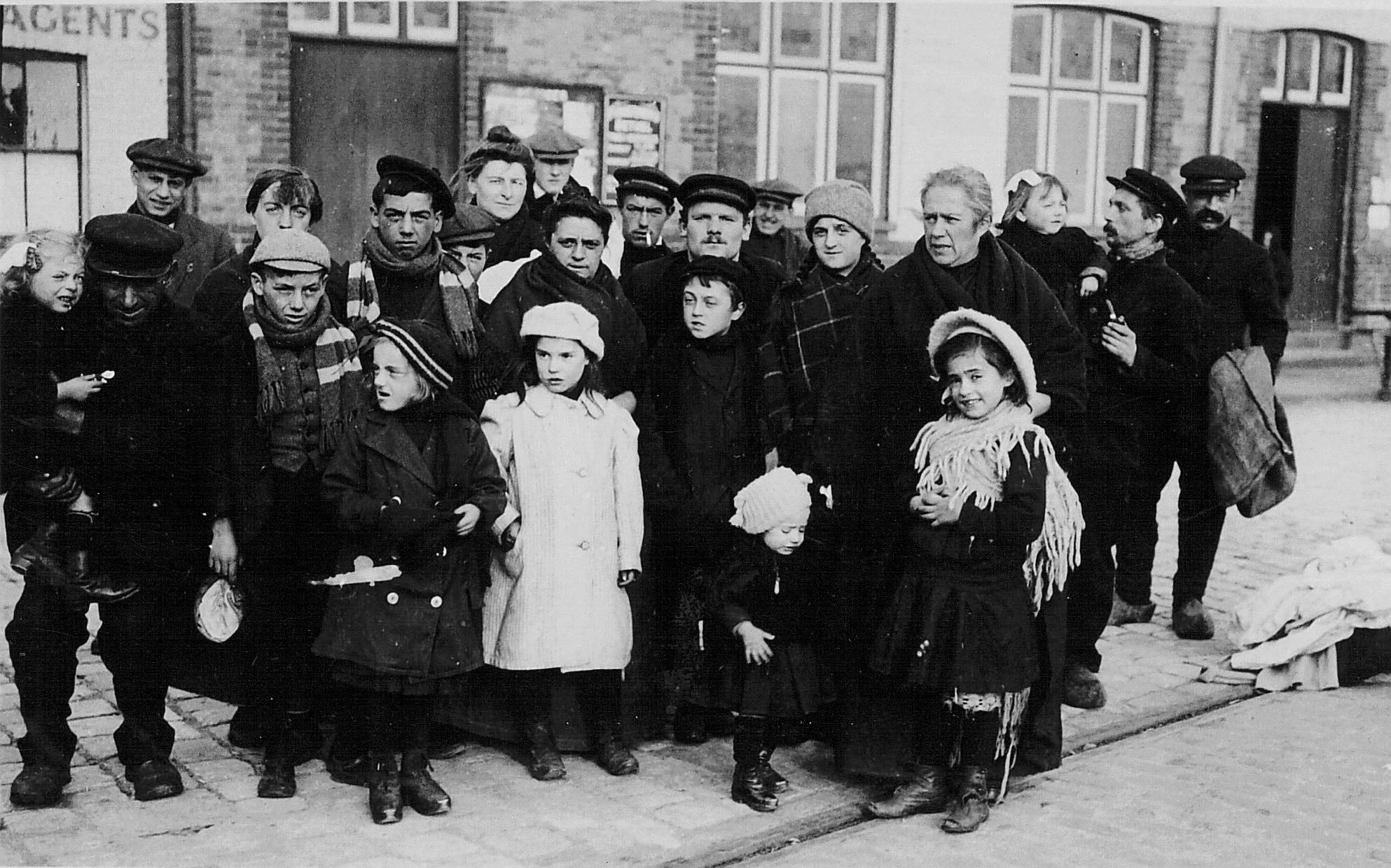In this blogpost Dr Lucy Noakes discusses a recent First World War centenary event in Brighton and reflects on the personal dimensions of our continuing fascination with the First World War.
On Saturday 13 September, 2013, the grounds of the Royal Pavilion estate in Brighton echoed once again to the sounds of Sikh riflemen parading and marching. Between 1914 and 1916 the Royal Pavilion and the Dome in the centre of the city had been the Kitchener Hospital, one of three buildings in Brighton (the others being the workhouse and a school) that were a temporary home to soldiers from the Indian sub-continent who had been injured while fighting on the Western Front. The 15th Ludhiana Infantry Regiment, a re-enactment group under the auspices of the National Army Museum’s ‘War and Sikhs’ project were participating in the War Stories Open Day being run by the Royal Pavilion and Museum to mark the major War Stories exhibition running at the Museum until March 2015.
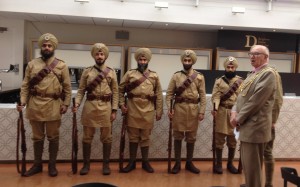
15th Ludhiana Infantry Regiment (National Army Museum War and Sikhs project) with Brian Fitch, Mayor of Brighton. Brighton Dome.
This affecting and affective exhibition traces the history of the war through fifteen individuals who came from, or had links with, Brighton during the war years. These included Bob Whiting, the goalkeeper with Brighton and Hove Albion football team, who joined the army with some of his team-mates in 1915 and was killed in the Arras offensive of 1917, a family of Belgian refugees who settled in Sussex, and Manta Singh, officer in a Sikh Regiment (and great grandfather of one of the re-enactors present at the Open Day) who had died in the Kitchener hospital in 1915 of wounds received when rescuing his commanding officer from the battlefield. In this focus on individuals, the exhibition could perhaps be understood as being shaped by the ‘new museology’; an approach to museum displays that has moved beyond the traditional ‘glass case’, replacing artefacts with affect and focusing instead on the lives and stories of historical actors as a means to engage the interest, and empathy, of the visiting public.[1] As this short piece will go on to argue, this is an approach that perhaps has an especial resonance for our understandings of the First World War.
As well as the Sikh Regiment, many other groups participated in the Open Day, and visitors to the Museum were able to handle wartime artefacts, hear popular songs from the war years, find out more about the history of Brighton and Hove during the war, and research the histories of their own families and communities in wartime. ‘Gateways’ ran an information stall, where we helped visitors who wanted to discover more about their ancestors’ wartime experiences. Helping people to research these experiences was a fascinating experience for the historians and history students who volunteered on the stall – a real ‘hands on’ history that reinforced our sense that the First World War continues to have a real resonance in many people’s lives today. It’s not often that the historian encounters the visceral emotional response that some visitors to the Gateways stall had when encountering the names of relatives on the Commonwealth War Graves Commission website.
Why is this? In part, of course, it is due to the nature of the war itself – its unprecedented and unexpected scale continues to have a resonance down the years, leading to a widespread understanding of the conflict as marking a kind of break between a lost, past world (‘never such innocence again’ as Larkin remarked fifty years on) and the modern world of today.[2] Political, as well as social and cultural histories have played their part in this: the rise of the totalitarian regimes that so dominated and decimated Europe in the mid 20th century are widely seen as having their origins on the battlefields of First World War, and the unsatisfactory peace treaty at its close. Cultural historians like Modris Eksteins and Paul Fussell have found in the war a turn away from the literary, musical and artistic forms of the 19th century and an embracing of the tropes of modernism, in high culture if not in its more popular forms.[3] And social historians have long debated the extent to which the war was a modernising force, bringing in its wake an extended democracy, and an increased willingness of the state to intervene in areas previously understood as the domain of the individual and the family.[4]
There is clearly more to it than this however. Many feel a real, personal link to those whose lives were shaped by the war. This is, I think, more than a simple desire to be ‘a part of history’, to claim a personal, familial role in the conflict that is being commemorated at the moment, though as Dan Todman has perceptively noted, this can be a factor in the ongoing fascination with key events of the war years for Britain, such as the first day of the Battle of the Somme, or Passchendaele, the third Battle of Ypres.[5] There is a personal dimension to the continuing fascination with the war years that can be harder to trace in many of the other key events of the recent past. The First World War coincided not only with the growth of photography and film, giving us numerous images of the battlefield and the home front, but with the growth of literacy, enabling more ‘ordinary’ soldiers to write home about their experiences, or to reflect on these after the war in forms that have been passed down through families and in archives. Conditions for soldiers and civilians in the Boer War just a decade or so earlier may have been equally foul, but, for the most part, they weren’t written down or photographed, and the smaller numbers involved mean what memories there are exist in fewer households today.
The sheer numbers of those involved then plays a key role in this, as family stories of ancestors caught up in the war both reinforce and are shaped by, popular, public representations. The rush to volunteer in 1914, the formation of the Pals Battalions in 1915 and the introduction of conscription in 1916 ensured that more men than ever before were to experience military life. The formation of the Women’s Auxiliary Army Corps in 1917, and the work of nurses on the war fronts, together with aerial and naval bombardment, ensured that many British women saw the impact of industrial warfare first hand. Many households in Britain today can claim some link to the First World War, either through the participation of a male ancestor in the military or through the war’s impact on those at home in Britain, or in the Empire and Dominions. War memorials, Remembrance Sunday, war poets on the school syllabus, and the ease with which many of us today can visit the war cemeteries in France and Belgium all demonstrate both the continuing fascination with the war years, and its ongoing presence in our material and cultural lives.
Many historians continue to express frustration with (to reluctantly cite Michael Gove) ‘the Blackadder version of the war’, in which everyone dies, and indeed we should remember that the majority of combatant survived the war, and that the social and economic changes it engendered led to long term improvements in the lives of many. However, I would suggest that today’s wide public acceptance that the war was, largely, a futile waste of men’s lives that ended in an unsatisfactory peace which laid the grounds for the even more destructive Second World War, in fact indicates not only an admirable empathy with those who suffered in the war, but a perhaps even more worthwhile scepticism about politicians who are all too willing to rush into conflicts today. The focus on individual stories, and the emotional resonance that the war still has for many, means that the centenary of the war provides us with fertile ground for engaging with the wider public in historical research.
[1]Merriman, N. (1991) Beyond the Glass Case: The Past, the Heritage and the Public in Britain (Leicester: Leicester University Press).
[2]Larkin, P. (1964) MCMXIV.
[3]Eksteins, M. (1989), Rites of Spring: The Great War and the Birth of the Modern Age (New York: Houghton Mifflin); Fussell, P. (1975), The Great War and Modern Memory (Oxford: Oxford University Press).
[4]Marwick, A. (1965; 2006), The Deluge: British Society and the First World War (Hampshire: Palgrave Macmillan); Braybon, G. (1981), Women Workers and the First World War (London: Routledge); Gregory, A. (2008), The Last Great War(Cambridge: Cambridge University Press).
[5]Todman, D. (2009), ‘The 90th Anniversary of the Battle of the Somme’ in M. Keren & H. Herwig (eds.), War Memory and Popular Culture (North Carolina: McFarland).

